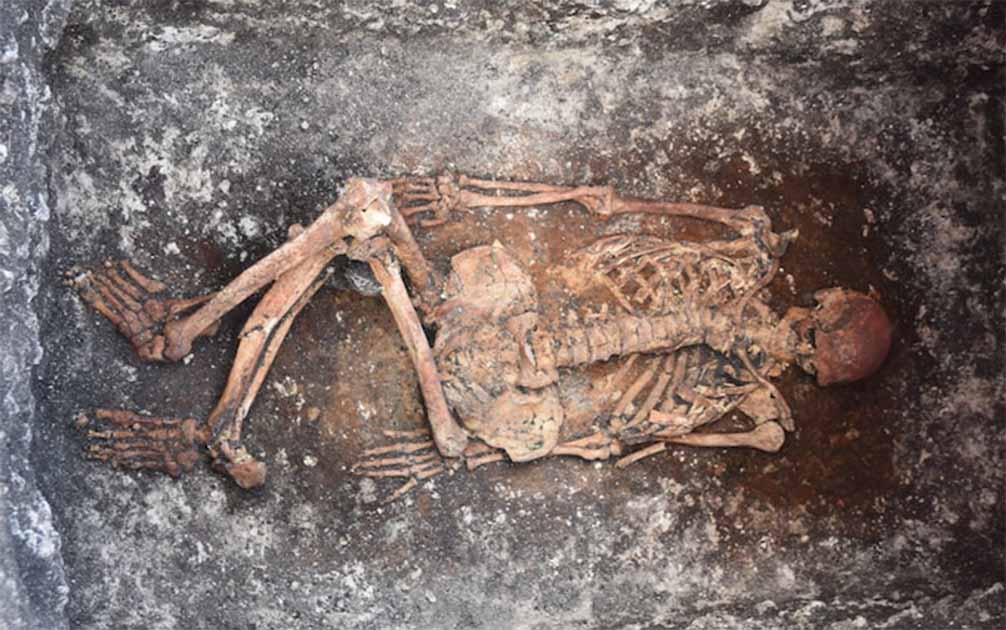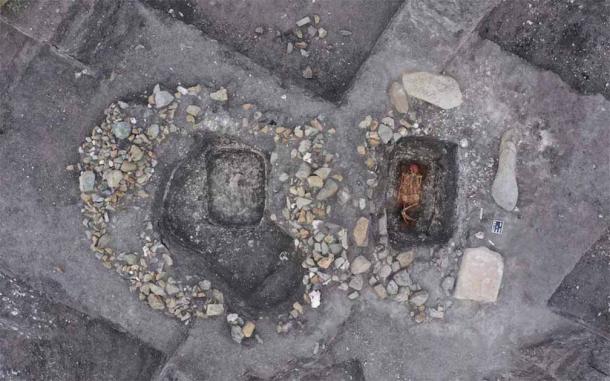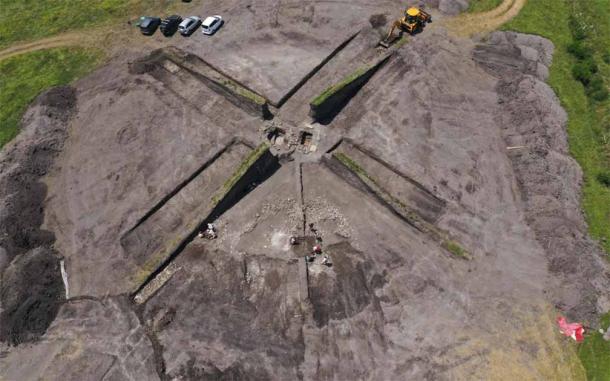Unique skeletal signatures identified on 5,000 years old bodies from modern Hungary, Romania and Bulgaria, provide the earliest evidence of horse riding ever discovered.
A team of researchers has found that around 3,000 BC people in eastern Europe suffered “horsemanship syndrome.” The team, from the University of Helsinki and Hartwick College in New York, drew their conclusions after studying over “200 Yamnaya individuals” dating as far back as the beginning of the Bronze Age .
A Hips Up Reveals the Oldest Riders

The researchers discovered a group of ancient Yamnaya, also known as the Pit Grave culture or Ochre Grave culture, who were equestrian specialists that had originated around Ukraine and western Russia between 3300–2600 BC.
Over time, these Copper Age horse people spread across Europe domesticating wild horses.
According to the researchers’ new paper published in the journal Science Advances , that was presented at the annual conference of the American Association for the Advancement of Science in Washington, having mastered the arts of horsemanship, “carts full of food, weapons and other provisions were transported long distances, as well as livestock to be herded more effectively”.
The team successfully identified five ancient individuals who had “the most reliable evidence” of having been horse riders. The skeletons were unearthed from kurgan burial mounds discovered in Romania, Bulgaria and Hungary, and the leg and hip bones of four of these skeletons demonstrated signs of “horsemanship syndrome”.

A Yamnaya grave of a horse rider discovered in Malomirovo, Bulgaria. He was a man estimated to have been aged between 65 and 75 when he died (Michał Podsiadło/ Science Advances )
Horsemanship Syndrome
What then are the signs of “horsemanship syndrome?” According to a report in The Daily Mail , lead author Martin Trautmann said: “Biomechanical stress markers on human skeletons provide a viable way to further investigate the history of horseback riding and may even provide clues about riding style and equipment.” For example, riders gripping to the side of a horse, while using the lower body and thigh muscles, suffered stress reactions on their pelvis’ and femur.
Furthermore, “stress-induced vertebral degeneration” was another major sign of vertical impact caused by bouncing on horses. In one case, a rider showed injuries on the sacral vertebrae – a large, triangular-shaped bone positioned just above the tailbone, caused by “a forceful fall on the backside is the most likely trauma scenario,” according to the paper.

Overview of the archaeological excavations of a Yamnaya kurgan in Malomirov. (Michał Podsiadło/ Science Advances )
Chair Seating For Comfort
According to the researchers, the osteological features observed on the skeletons “fit well” with a specific riding style seen in later depictions of Bronze Age riders. The riders usually rode in a position called “chair seat,” which meant riding without a padded saddle, or stirrups, to avoid discomfort to horse and rider.
The new paper says this particular style is physically demanding, “with the legs exerting constant pressure to cling to the mount’s back and needs continual balancing.” However, the riding style was not suited for armed combat or controlling herd animals. It was much later that shaped and “padded” saddles and stirrups were used. In conclusion, the new findings provide “a strong argument that horseback riding was already a common activity for some Yamnaya individuals as early as 3000 BC”.
But There Were Limitations
Martin Trautmann wrote in the paper that jumping on a horse’s back 5,000 years ago “may have been one small step for man, but it was a giant leap for mankind.” Co-author David Anthony from Hartwick College, said these advances made herding cattle and sheep “three times more efficient.” However, due to a lack of specialized gear and short breeding history, once onboard, the team of scientists think the horses would have been “hard to handle”.
Adding to this, the increased anxiety response in early Yamnaya horses probably made them even more likely to ‘bolt’ when frightened. The results of riding these relatively skittish horses was positive, in that people could quickly escape raids. However, the military benefit of equestrianism “may have been limited”.
Top image: Discovered in Malomirovo, Bulgaria, the skeleton of a horse rider displays the typical burial custom of the Yamnaya Source: Michał Podsiadło/ Science Advances
By Ashley Cowie
Source: ancient-origins.net








